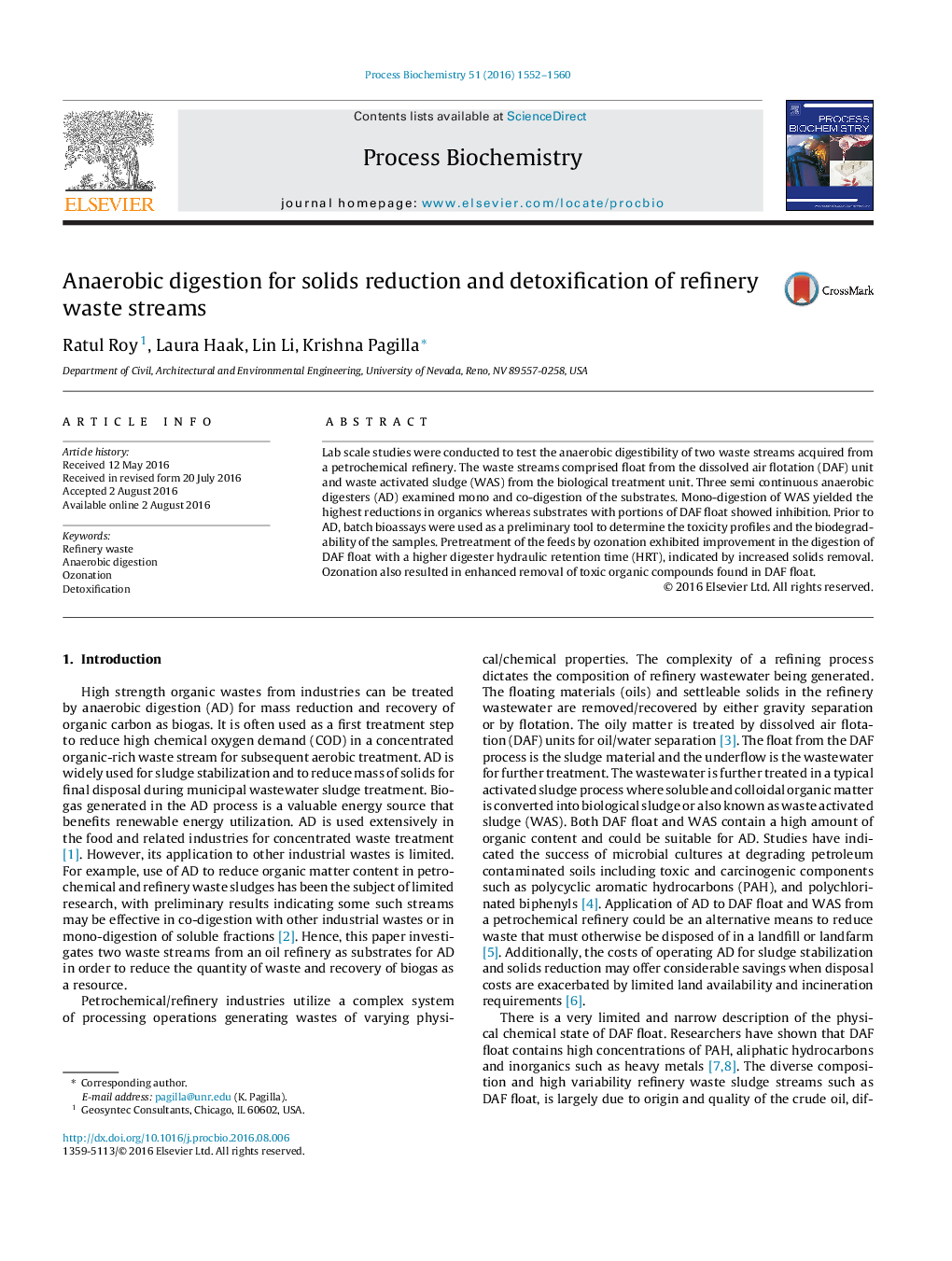| Article ID | Journal | Published Year | Pages | File Type |
|---|---|---|---|---|
| 6453038 | Process Biochemistry | 2016 | 9 Pages |
â¢Anaerobic digestion of two wastes from an oil refinery is examined through mono- and co-digestion.â¢Digestion goals included solids reduction and degradation of hazardous organic compounds.â¢Co-digestion improved degradation of high-strength waste, but recalcitrance/inhibition persisted.â¢Ozonation oxidized hazardous compounds and enhanced digestion under longer retention times.
Lab scale studies were conducted to test the anaerobic digestibility of two waste streams acquired from a petrochemical refinery. The waste streams comprised float from the dissolved air flotation (DAF) unit and waste activated sludge (WAS) from the biological treatment unit. Three semi continuous anaerobic digesters (AD) examined mono and co-digestion of the substrates. Mono-digestion of WAS yielded the highest reductions in organics whereas substrates with portions of DAF float showed inhibition. Prior to AD, batch bioassays were used as a preliminary tool to determine the toxicity profiles and the biodegradability of the samples. Pretreatment of the feeds by ozonation exhibited improvement in the digestion of DAF float with a higher digester hydraulic retention time (HRT), indicated by increased solids removal. Ozonation also resulted in enhanced removal of toxic organic compounds found in DAF float.
Graphical abstractDownload high-res image (93KB)Download full-size image
